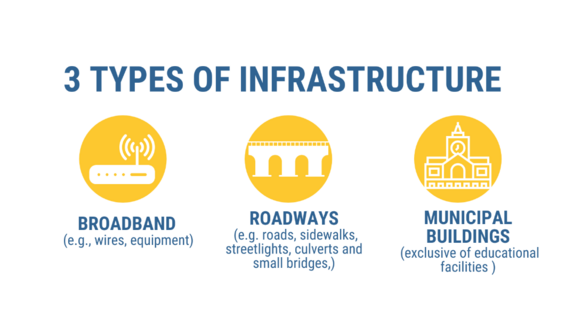Overview
The uneven course of economic development across the Commonwealth is a significant cause of concern. It is an acute problem in Western Massachusetts, which also faces declining population, demographic changes leading to lower school enrollments, and loss of municipal services, all of which contribute to serious challenges for civic life. Many communities across the Commonwealth, but particularly in the western region, have property values that are still lower than before the Great Recession and have seen little new growth. The region’s slow growth in its tax base leads to constrained municipal resources for spending on services and capital expenditures.
As noted by the National Research Council, “[Civil] infrastructure provides the range of essential services generally necessary to support a nation’s economy and quality of life—arguably entire economies rely on the ability to move goods, people, and information safely and reliably.”1 Due to a lack of resources, as well as a state government policy focus on the Commonwealth’s commercial centers, communities in Western Massachusetts do not have the tools necessary to maintain or develop their public infrastructure

To conduct this study, the Division of Local Mandates (DLM) has conducted interviews with stakeholders, such as state and local elected officials, municipal department staff, regional planning agencies, professional organizations, and state agencies.2 DLM also distributed a survey to the chief executive officers of the municipalities in Western Massachusetts, which were defined for the purposes of this study as those communities in Massachusetts’ four westernmost counties: Berkshire, Franklin, Hampden, and Hampshire.3 Western Massachusetts as thus defined includes mostly rural municipalities, but also urban communities such as Springfield, Greenfield, and Pittsfield.
As there are many different types of infrastructure prevalent in a modern municipality, this report focuses on three types of infrastructure.

Educational facilities, which have a dedicated state agency in the Massachusetts School Building Authority to help with project planning and funding, are not included as basic infrastructure in this report.
Through this survey, independent research, literature review, and contact with stakeholders, DLM aims to understand the state of infrastructure development in Western Massachusetts and better inform policymakers for future decision making. In fact, many of the issues highlighted in this report apply universally throughout the Commonwealth.
| Date published: | October 5, 2021 |
|---|